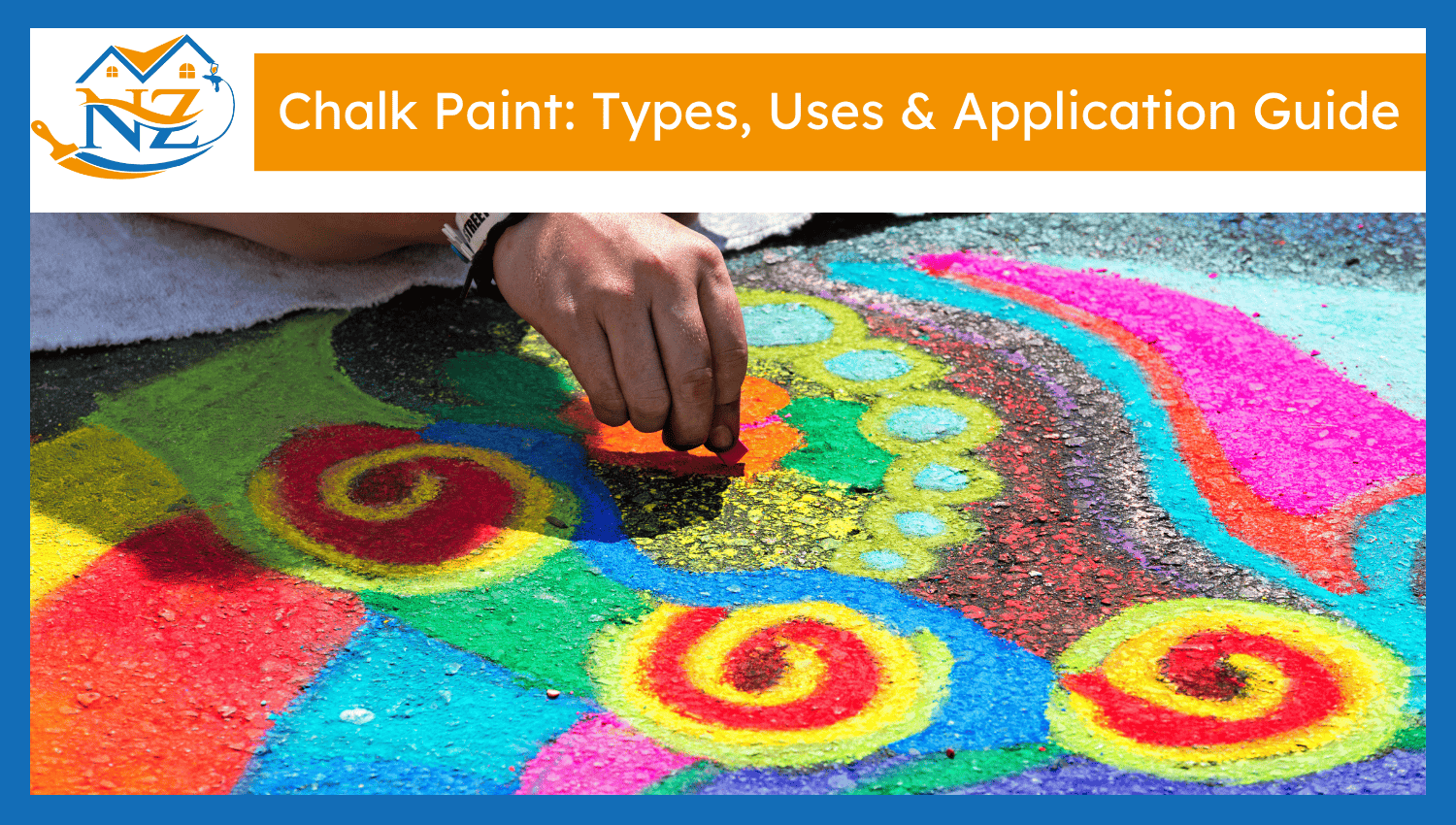

Chalk paint is a thick, non-reflective, and versatile paint with low volatile organic compounds. It contains water as a primary solvent that dries quickly, leaving an ultra-matte and chalky finish. Chalk paint is the registered trademark of Annie Sloan. Now, this term is used to describe all paints that mimic this flat, velvety texture. It was first used as a pigment in paint for whitewashing in the Middle Ages. Chalk paint does not require any priming or sanding, which makes it ideal for a distressed or aged look. It is often confused with chalkboard paint, which is meant for writing surfaces like classroom boards. Unlike standard water-based paints, it is less likely to drip with excellent adhesion. Mix the latex paint with baking soda or plaster of Paris to DIY chalk paint.
| Property | Description |
|---|---|
| Base | Water-based |
| Finish | Ultra-matte, chalky, velvety texture |
| Drying Time | Fast drying (typically 30 minutes to 1 hour) |
| Adhesion | Excellent — adheres to most surfaces with little or no sanding/priming |
| Coverage | High coverage; often one to two coats needed |
| Ease of Use | Thick consistency, very beginner-friendly |
| Distressability | Easily distressed for vintage or shabby-chic looks |
| Sealing Required | Needs wax or topcoat for durability and water resistance |
| Cleanup | Easy cleanup with soap and water |
| Toxicity | Low odor and low VOC — safe for indoor use |
| Durability | Moderate; improves significantly with proper sealing |
| Flexibility | Less flexible than latex or acrylic — may scratch without sealant |
There are three types of chalk paint finishes:
Here are the four most common uses of chalk paint:
Here are the six limitations of chalk paint:
Here is the step-by-step guide to apply chalk paint:
| Color | Visual Appeal | Common Uses |
|---|---|---|
| Old White | Soft, creamy, antique white | Vintage furniture, shabby-chic interiors |
| Paris Grey | Cool, elegant, muted gray | Dressers, cabinets, French country style |
| Duck Egg Blue | Muted blue-green, calming | Accent pieces, coastal or cottage décor |
| Graphite | Deep charcoal, almost black | Statement furniture, modern rustic finishes |
| Aubusson Blue | Classic, rich teal-blue | Bookshelves, dressers, antique touches |
| Chateau Grey | Soft sage with a hint of gray | Farmhouse tables, plant stands, distressed layers |
| Antoinette | Dusty pink with a romantic tone | Children’s furniture, vintage pieces |
| Emperor’s Silk | Bold, bright Chinese red | Decorative accents, focal furniture pieces |
| Coco | Warm brown with a hint of taupe | Wooden sideboards, rustic or earthy themes |
| Cream | Warm, soft yellowish white | Cabinets, traditional interiors, upcycled woodwork |
| Paloma | Modern blend of gray and lavender | Bedroom furniture, neutral-themed rooms |
| Louis Blue | Soft pastel blue | Nursery furniture, French-inspired designs |
| Florence | Vibrant turquoise-green | Boho chic furniture, statement accent pieces |
| Original | Slightly warmer than Old White | Mirrors, frames, traditional cabinetry |
| Napoleonic Blue | Strong, regal navy blue | Bold dressers, classic restoration projects |
Yes, chalk paint is used on accent walls. It provides an aesthetic look to traditional breathable lime render or lime plaster walls.
Yes, sealing the chalk paint is important to protect the surface and keep the finish intact.
Chalk paint feels dry when you touch it within 30 to 60 minutes. It requires 24 hours before sealing to allow the paint to bond fully. This duration can vary depending on the humidity level and paint thickness.
Yes, you can apply another water-based paint over it. Make sure to clean the surface before repainting.